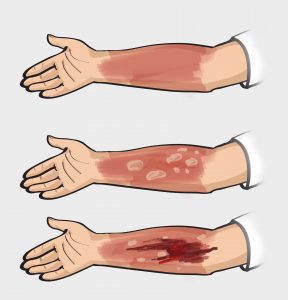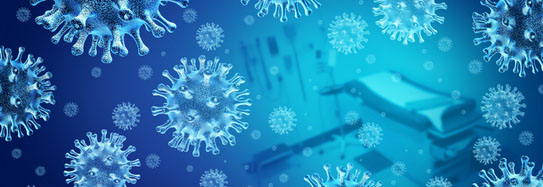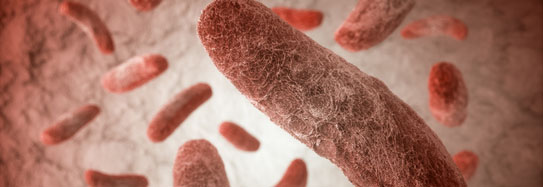Burns are categorized according to their severity:

First degree:
These are the types of burns that most people experience at some time. They are minor injuries that affect just the outer layer of skin, called the epidermis. They can be painful, causing redness to the skin and some swelling. Mild sunburns are a common type of first degree burn.
Second degree:
These injuries are deeper than first degree burns, affecting the epidermis and the second layer of the skin, called the dermis. If the burn is small, less than two to three inches wide, it is considered minor, but more extensive second degree burns are treated as major burns. Second degree burns are also considered major if they are on the face, hands, feet, a major joint, groin/genitals, or buttocks.
Second degree burns are usually painful and cause redness and swelling. They may cause blistering and breaks in the skin, increasing your risk of developing an infection. Sunburns that blister and are very painful are considered to be second degree burns.
Third-degree:
These are serious injuries, even if they are small. They can be life-threatening. These burns go through the layers of the skin to the fat below. There may be no pain in the area because the nerves may be destroyed, although there will likely be pain around the site, where the burns are not as deep.
People with third degree burns are at particular risk for dehydration, infection, and sepsis.
Burns on your face
Burns on your face, regardless of the severity, may also cause internal burns in your airway, which can be life-threatening. Facial burns can happen as part of a larger burn, but your face can get burned if you are too close to the flame when you light a barbecue or pilot light, or even if you suddenly release steam from a pot, for example. If you have burned in your airway, you may experience:
- Burns on your lips and mouth
- Coughing
- Difficulty breathing
- Changes in your voice
- Wheezing































